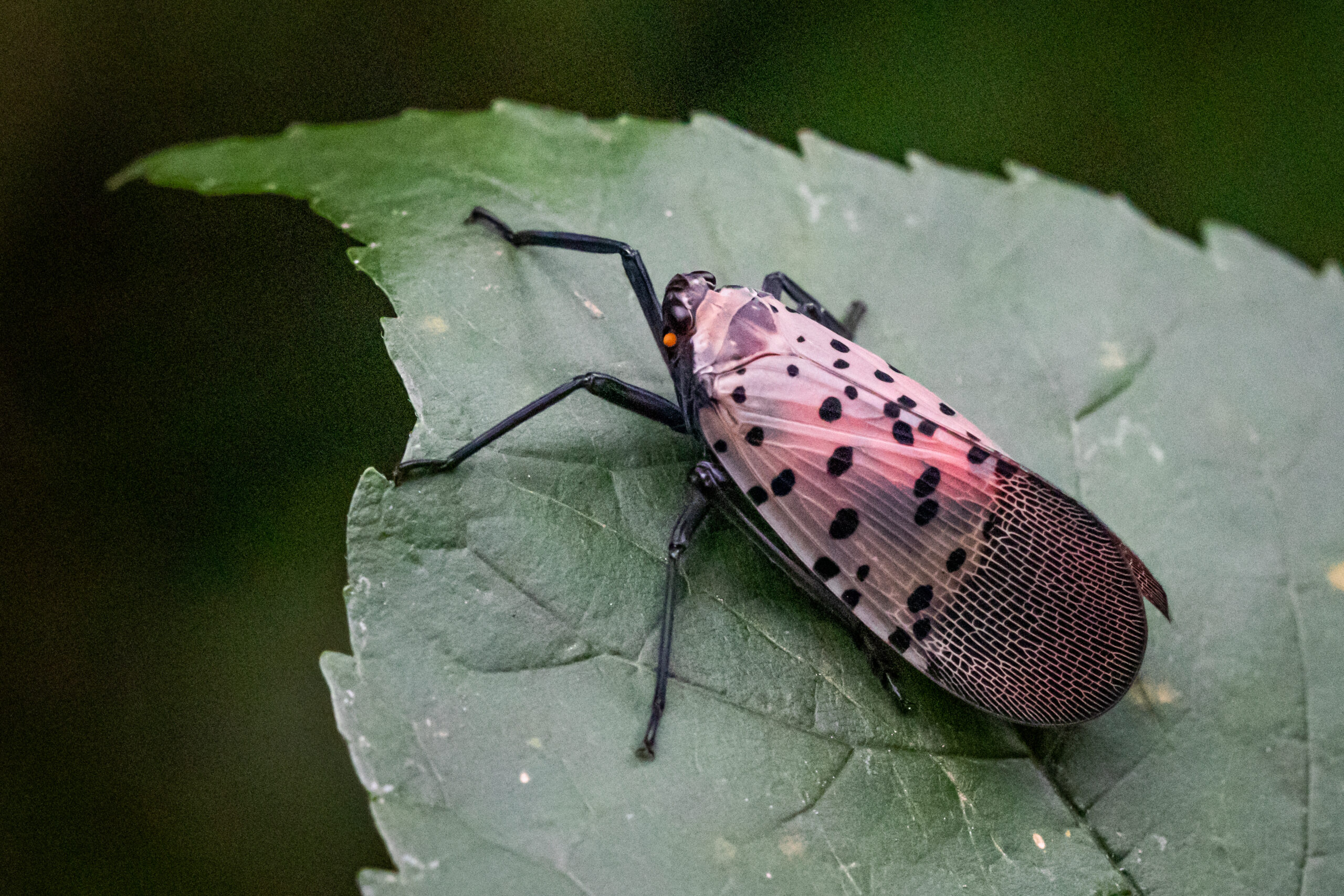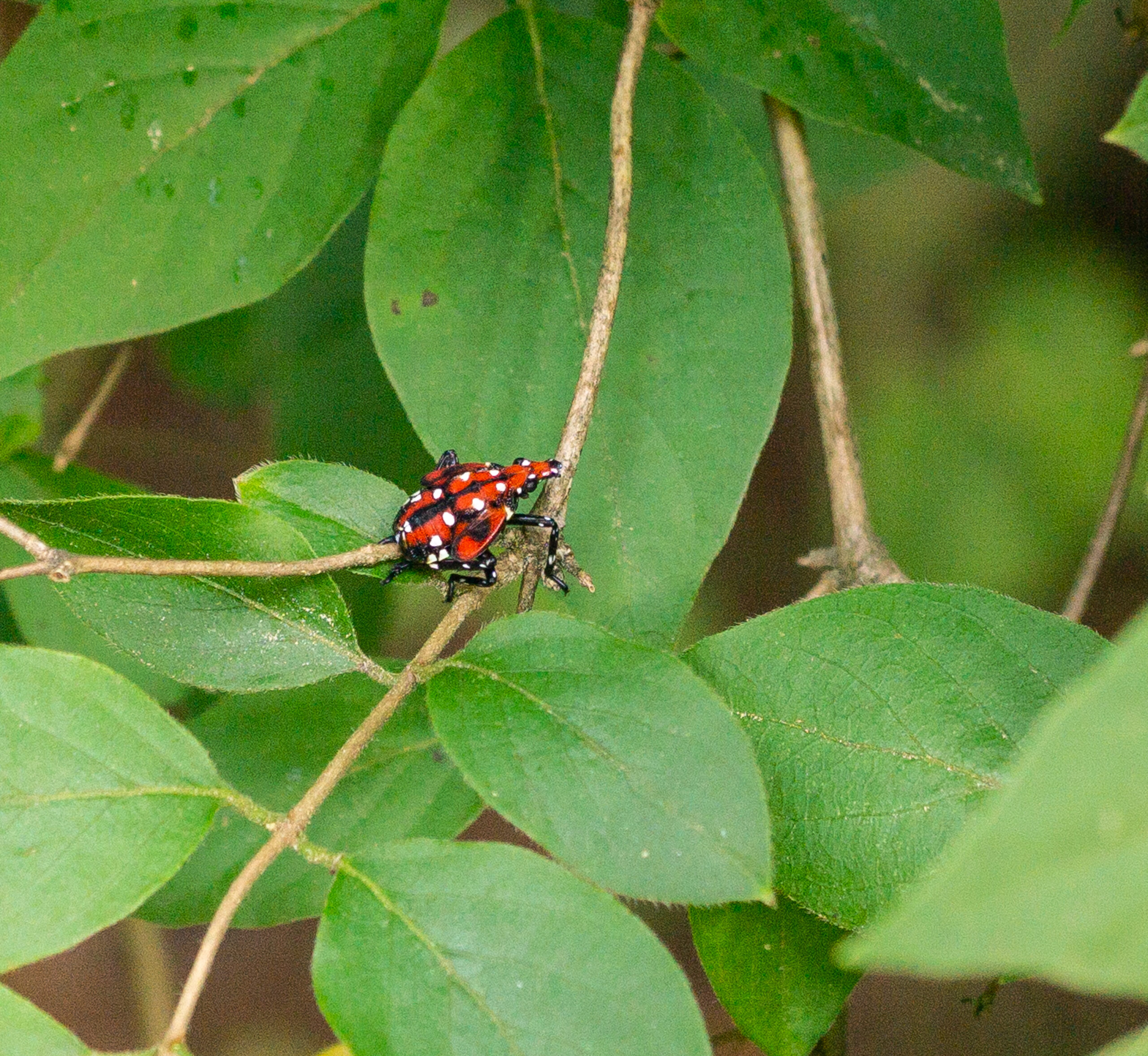Ecosystems exist in a delicate balance, and one small event, such as the introduction of a new pest, can trigger big changes. Invasive species are introduced organisms that can bring harm to their non-native ecosystem. When introduced, these organisms can cause wide-ranging disruptions, altering habitat and out-competing native species.

Pictured here is the spotted lanternfly, an invasive planthopper that we first observed in the Park about two years ago, that can cause significant problems for native trees and plants.
Though you might be surprised to hear this advice, we have an important message: if you see this insect in Hudson River Park, (or anywhere in NYC) please squash and dispose of it in the nearest trash can.
How can one insect cause major problems?
Spotted lanternflies damage plants by feeding on sap and then secreting a sticky substance that can encourage the growth of mold. Weaker, stressed trees are more susceptible to disease and becoming infested by other insects. And while spotted lanternflies are a greater threat to agricultural crops, they still cause notable issues for the health of trees in an urban environment as well.

In its native range of Eastern Asia, the number of spotted lanternflies is kept in check by a variety of predators; praying mantises, spiders and even chickens help control the population. Without the control of those predators, lanternfly populations threaten up to 70 species of plants in the United States.
While staying on the lookout for invasive species such as the spotted lanternfly is important, we also need to continue supporting NYC’s native insects. In fact, one of the best ways to ensure healthy populations of local insects is already growing in Hudson River Park! Native plantings, like those on Pier 26 and the Habitat Garden, support native pollinators including monarch butterflies.

Like spotted lanternflies, monarch butterflies are colorfully-marked, winged insects that have made headlines this summer — but for very different reasons.
Since the 1990’s, the global population of monarch butterflies has declined by 90%, and the species was recently declared endangered. The restoration of milkweed, especially in developed areas like NYC, protects monarchs. This is because milkweed is integral to the life cycle of monarch caterpillars. Not only is it the location that they lay their eggs, but it is also the monarch caterpillar’s only food source. Hudson River Park’s Habitat Garden is a designated Monarch Waystation where Park staff and volunteers plant and care for milkweed plants to better support monarchs.
Monarch butterflies are just one example of the hundreds of wildlife species that rely on the Park’s green spaces — and we need your help to keep these habitats thriving. You can help protect the health of our trees and plants by keeping a lookout for spotted lanternflies species. Thanks for helping us squash the problem (literally). And if you want to get more involved in supporting Park horticulture, check out our Volunteer Program.
Learn more about the spotted lanternfly and monarch butterflies:
USDA Animal and Plant Health Inspection Service